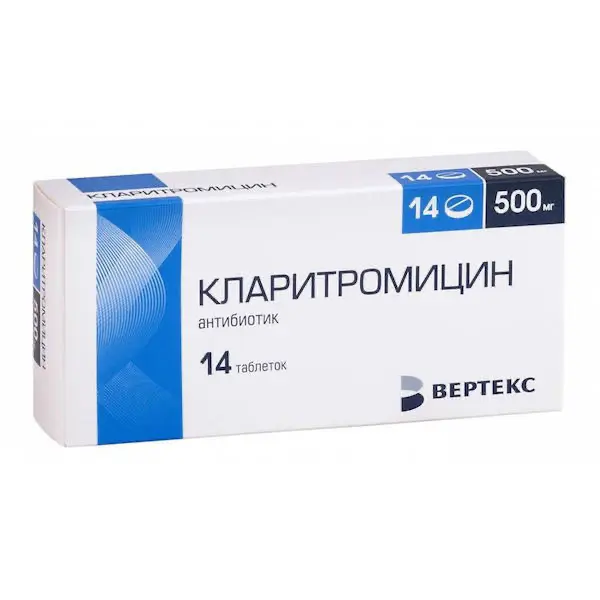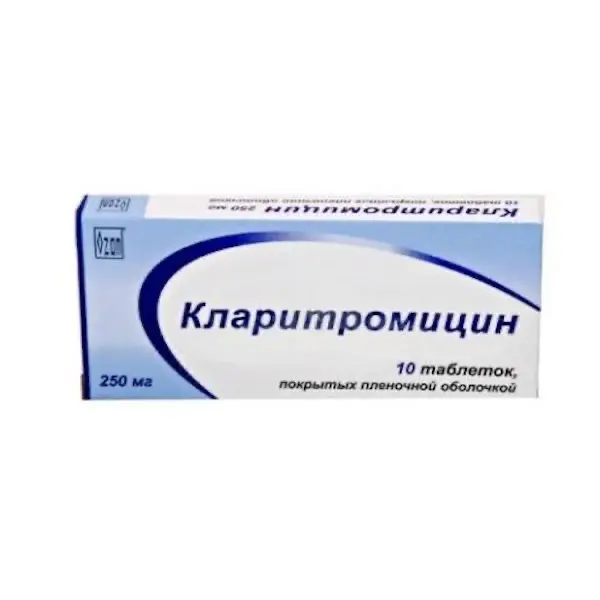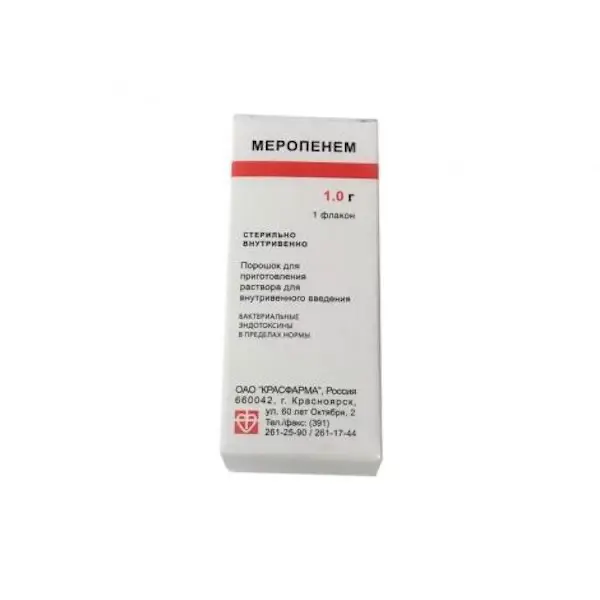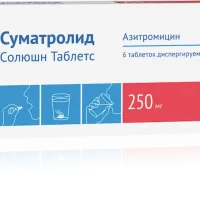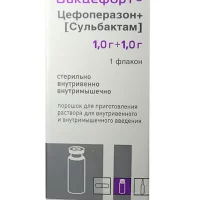Description
Clarithromycin Pharmacodynamics
Semisynthetic, broad-spectrum macrolide antibiotic. Disrupts protein synthesis of microorganisms (binds to 50S subunit of the ribosome membrane of the microbial cell). Acts on extra- and intracellularly located pathogens. Clarithromycin activity against most strains of the following microorganisms has been proven both in vitro and in clinical practice – aerobic gram-positive microorganisms: Staphylococcus aureus, Streptococcus pneumoniae, Streptococcus pyogenes; aerobic gram-negative microorganisms: Haemophilus influenzae, Haemophilus parainfluenzae, Moraxella catarrhalis, Legionella pneumophila; other microorganisms: Mycoplasma pneumoniae, Chlamydia pneumoniae;
Mycobacteria: Mycobacterium avium complex (MAC), complex including: Mycobacterium avium and Mycobacterium intracellulare, Helicobacter pylori. Beta-lactamases do not affect the activity of clarithromycin.
Clarithromycin activity in vitro – aerobic gram-positive microorganisms: Listeria monocytogenes, Streptococcus agalactiae, Streptococci groups C, F, G, Streptococci groups viridans, aerobic gram-negative microorganisms: Neisseria gonorrhoeae, Bordetella pertussis, Pasteurella multocida, anaerobic gram-positive microorganisms: Clostridium perfringens, Peptococcus niger, Propionibacterium acnes; anaerobic gram-negative microorganisms: Bacteroides melaninogenicus; spirochetes: Borrelia burgdorferi, Treponema pallidum; mycobacteria: Mycobacterium leprae, Mycobacterium chelonae; Campylobacter: Campylobacter jejuni.
The microbiologically active metabolite of clarithromycin, 14(R)-hydroxyclarithromycin, is twice as active as the parent compound against Haemophilus influenzae. Clarithromycin and its metabolite in combination can have both additive and synergistic effects on Haemophilus influenzae in vitro and in vivo, depending on the bacterial strain
Most strains of Staphylococcus aureus resistant to methicillin and oxacillin are resistant to clarithromycin.
Cross-resistance to clarithromycin and other macrolide antibiotics as well as to lincomycin and clindamycin may develop.
Indications
Adults: pharyngitis, tonsillitis, acute maxillitis, exacerbation of chronic bronchitis, community-acquired pneumonia, uncomplicated skin and subcutaneous tissue infections; disseminated infection caused by Mycobacterium avium and Mycobacterium intracellulare. In combination with amoxicillin and omeprazole/lansoprazole as triple therapy for infections caused by Helicobacter pylori, including duodenal ulcer. In combination with omeprazole or ranitidine bismuth citrate as dual therapy for the treatment of duodenal ulcers caused by Helicobacter pylori
Children from 12 years of age: pharyngitis, tonsillitis, community-acquired pneumonia, acute maxillary sinusitis, acute otitis media, uncomplicated skin and subcutaneous tissue infections; disseminated infection caused by Mycobacterium avium and Mycobacterium intracellulare.
Contraindications
– Hypersensitivity to clarithromycin, macrolides and other components of the drug.
– Concomitant use of clarithromycin with the following drugs: astemizole, cisapride, pimozide, terfenadine (see section “Interaction with other medicinal products”).
– Concomitant use of clarithromycin with ergot alkaloids, e.g. ergotamine, dihydroergotamine (see section “Interaction with other medicinal products”).
– Concomitant use of clarithromycin with oral midazolam (see section “Interaction with other medicinal products”).
– Concomitant use of clarithromycin with HMG-CoA reductase inhibitors (statins) that are significantly metabolized by CYP3A4 isoenzymes (lovastatin or simvastatin), due to an increased risk of myopathy, including rhabdomyolysis (see section “Interaction with other medicinal products”).
– Concomitant administration of clarithromycin with colchicine in patients with impaired renal or hepatic function, taking P-glycoprotein inhibitors or potent CYP3A4 isoenzyme inhibitors (see section “Interaction with other medicinal products”).
– Concomitant administration of clarithromycin with ticagrelor or ranolazine.
– History of QT interval prolongation (congenital or acquired registered QT interval prolongation) or ventricular arrhythmias, including pirouette-type ventricular tachycardia (see sect. “Special considerations” and “Interaction with other medicinal products”).
– Hypokalemia (risk of QT interval prolongation).
– Severe hepatic failure concomitant with renal failure.
– Cholestatic jaundice/hepatitis in history, developed with clarithromycin (see section “Special information”).
– Porphyria
– Breast-feeding period.
– Under 12 years of age (efficacy and safety have not been established).
Caution
– Moderate to severe renal failure.
– Moderate to severe hepatic insufficiency.
– Myasthenia gravis (possible increase in symptoms).
– Concomitant use of clarithromycin with benzodiazepines such as alprazolam, triazolam, midazolam for intravenous use or for application to the oral mucosa (see “Interaction with other medicinal products”).
– Concomitant use with drugs that are metabolized by CYP3A isoenzyme, such as carbamazepine, cilostazol, cyclosporine, disopyramide, methylprednisolone, omeprazole, indirect anticoagulants (e.g., warfarin), quinidine, rifabutin, sildenafil, tacrolimus, vinblastine (see section “Interaction with other medicinal products”).
– Concomitant use with drugs that induce CYP3A4 isoenzyme, such as rifampicin, phenytoin, carbamazepine, phenobarbital, St. John’s wort (see section “Interaction with other medicinal products”).
– Concomitant use of clarithromycin with statins that do not depend on CYP3A isoenzyme metabolism (e.g. fluvastatin) (see section “Interaction with other medicinal products”).
– Concomitant use with “slow” calcium channel blockers that are metabolized by CYP3A4 isoenzyme (e.g., verapamil, amlodipine, diltiazem).
– Patients with coronary heart disease (CHD), severe heart failure, hypomagnesemia, conduction disorders or clinically significant bradycardia (less than 50 bpm), as well as patients concomitantly taking antiarrhythmic drugs of class IA (quinidine, procainamide) and class III (dofetilide, amiodarone, sotalol).
– Pregnancy.
Dosage and administration
- Inside, the tablets are taken regardless of the meal;
Adults: in pharyngitis and tonsillitis caused by Streptococcus pyogenes – 250 mg for 10 days every 12 h; in acute maxillitis – 500 mg for 14 days every 12 h; in exacerbation of chronic bronchitis caused by Haemophilus influenzae – 500 mg for 7-14 days every 12 h; caused by Haemophilus parainfluenzae – 500 mg for 7 days every 12 h; caused by Moraxella catarrhalis, Streptococcus pneumoniae – 250 mg for 7-14 days every 12 hours; for community-acquired pneumonia caused by Haemophilus influenzae – 250 mg for 7 days every 12 hours; caused by Streptococcus pneumoniae, Chlamydia pneumoniae, Mycoplasma pneumoniae – no 250 mg for 7-14 days every 12 hours; in uncomplicated skin and subcutaneous tissue infections caused by Staphylococcus aureus, Streptococcus pyogenes – 250 mg for 7-14 days every 12 hours; - In the treatment of infections caused by Mycobacterium avium, 500 mg twice a day is prescribed orally. Duration of treatment is 6 months or more.
- Adults for eradication of Helicobacter pylori in combination with other drugs: clarithromycin – 500 mg, lansoprazole – 30 mg and amoxicillin – 1000 mg, all drugs 2 times a day for 10-14 days; clarithromycin – 500 mg, omeprazole – 20 mg and amoxicillin – 1000 mg, all drugs 2 times a day for 10 days; clarithromycin 500 mg 3 times daily, omeprazole 40 mg daily for 14 days, with omeprazole at a dose of 20 mg daily for the next 14 days.
- In patients with chronic renal insufficiency (creatinine clearance less than 30 ml/min or serum creatinine concentration more than 3.3 mg/100 ml) the dose is reduced twice or the interval is increased twice. Maximum duration of treatment in patients in this group is 14 days.
- In children from 12 years old and body weight over 33 kg: in pharyngitis and tonsillitis caused by Streptococcus pyogenes – 250 mg for 10 days every 12 h; in acute maxillary sinusitis – 500 mg for 14 days every 12 h; in community-acquired pneumonia caused by Haemophilus influenzae – 250 mg for 7 days every 12 h; caused by Streptococcus pneumoniae, Chlamydia pneumoniae, Mycoplasma pneumoniae – no 250 mg for 7-14 days every 12 hours; in uncomplicated skin and subcutaneous tissue infections caused by Staphylococcus aureus, Streptococcus pyogenes – 250 mg for 7-14 days every 12 hours;
In the treatment of infections caused by Mycobacterium avium, 500 mg twice a day is prescribed orally. Duration of treatment – 6 months or more

